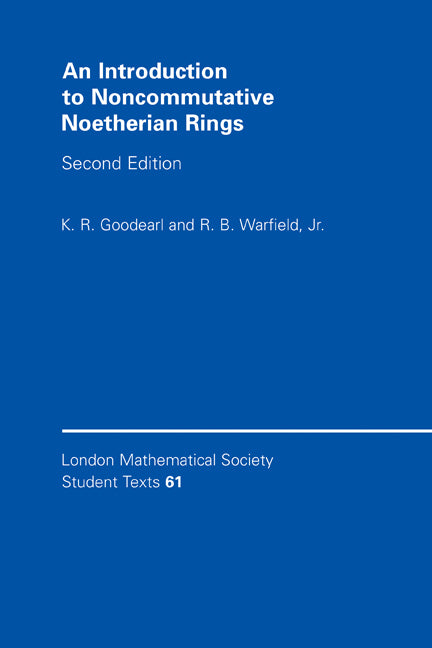Freshly Printed - allow 8 days lead
Couldn't load pickup availability
An Introduction to Noncommutative Noetherian Rings
This 2004 introduction to noncommutative noetherian rings is intended to be accessible to anyone with a basic background in abstract algebra.
K. R. Goodearl (Author), R. B. Warfield, Jr (Author)
9780521836876, Cambridge University Press
Hardback, published 12 July 2004
370 pages, 375 exercises
22.9 x 15.2 x 2.4 cm, 0.71 kg
'… well written and perfectly suits for both students beginning to study Ring theory and established mathematicians that are just interested in learning basics of the theory of Noetherian rings.' Zentralblatt MATH
This 2004 introduction to noncommutative noetherian rings is intended to be accessible to anyone with a basic background in abstract algebra. It can be used as a second-year graduate text, or as a self-contained reference. Extensive explanatory discussion is given, and exercises are integrated throughout. Various important settings, such as group algebras, Lie algebras, and quantum groups, are sketched at the outset to describe typical problems and provide motivation. The text then develops and illustrates the standard ingredients of the theory: e.g., skew polynomial rings, rings of fractions, bimodules, Krull dimension, linked prime ideals. Recurring emphasis is placed on prime ideals, which play a central role in applications to representation theory. This edition incorporates substantial revisions, particularly in the first third of the book, where the presentation has been changed to increase accessibility and topicality. Material includes the basic types of quantum groups, which then serve as test cases for the theory developed.
1. A few Noetherian rings
2. Skew polynomial rings
3. Prime ideals
4. Semisimple modules, Artinian modules, and torsionfree modules
5. Injective hulls
6. Semisimple rings of fractions
7. Modules over semiprime Goldie rings
8. Bimodules and affiliated prime ideals
9. Fully bounded rings
10. Rings and modules of fractions
11. Artinian quotient rings
12. Links between prime ideals
13. The Artin-Rees property
14. Rings satisfying the second layer condition
15. Krull dimension
16. Numbers of generators of modules
17. Transcendental division algebras.
Subject Areas: Algebra [PBF]


